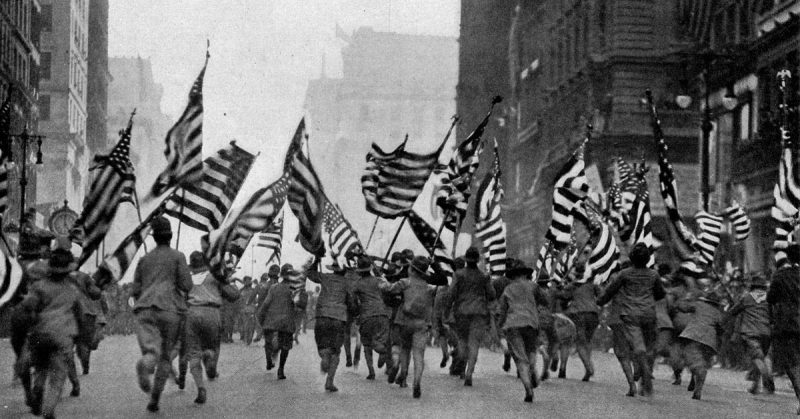There are a variety of flags in the First World War Museum at Nitro, WV, but the favorite of Clyde Mynes, 92, is a small American flag he carried in Berlin during World War II. The other, now worn and tattered, was the first flag to fly over Nitro 100 years ago. Nitro is using the town’s World War I Museum to kick off a year’s worth of centennial celebrations that started recently.
Various local and state officials spoke at the gathering concerning Nitro’s past and its goals for the future.
The city was formed in less than a year in order to build and operate a gunpowder manufacturing plant during the First World War. Military barracks were constructed for thousands of workers to sleep in. The name Nitro comes from the main ingredient in gunpowder, nitrocellulose.
Approximately 19,000 employees worked in the factory over the course of the war. At the conclusion of the war in 1918 manufacturing businesses moved into the city.
Mynes, a Huntington resident who relocated to Nitro in 1955, is one of the numerous veterans who call Nitro home. He recalls people throughout the area wanting to enlist. Mynes was too young to enlist after the attack on Pearl Harbour but did enlist later to help the war effort.
He works on a voluntary basis at the museum every Thursday. His schedule doesn’t vary: he eats lunch at the old high school, then he heads to the museum for a few hours of work in the afternoon. He brings along things he has collected: from the flag he carried over 80 years ago to aging copies of military newspapers.
He said attendance at the museum isn’t as popular as it should be. To him, the war history displayed in the museum isn’t history. It is life.
Nitro Mayor Dave Casebolt explained the centennial is an opportunity to not only reflect on the last 100 years, but is also a chance to attract people to the town.
He said Nitro is also utilizing the powerful image of a doughboy in World War One to remind people of the town’s past; all branding for the images and events throughout the town display the drawing, including those positioned at the Nitro-St. Albans Bridge.
They want all citizens to realize they are part of something, Casebolt said, that they belong and all can unite under this belief and the vibrant war history they have, Charleston Gazette-Mail reported.
He added that people have been talking to him about what is planned in Nitro for the year. The component that makes Nitro unique is that the people want to be involved in any way they can. It’s the people who make things spectacular.
